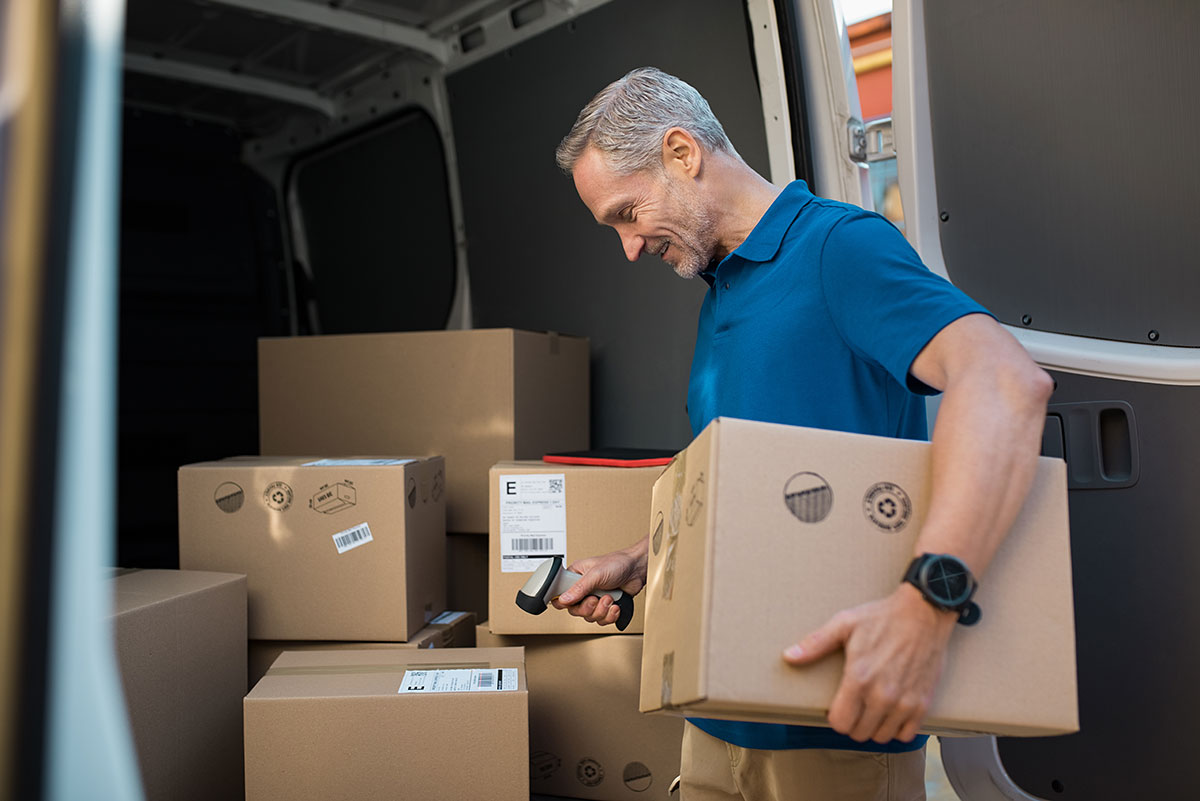Everything that happens between when a customer places an order to when they receive the goods on their doorstep is part of the overall shipping and handling strategy.
As a business owner, understanding the role of shipping and handling in your order fulfillment strategy can help you make informed decisions regarding inventory management and your supply chain. You’ll also be able to develop a better understanding of the impact of shipping and handling expenses on your company’s bottom line and take actionable steps to optimize these costs.
In this post, we’ll take a look at shipping and handling and discuss the different factors that affect your order fulfillment strategy.
What is Shipping and Handling?
Shipping and handling involve picking, packing, and transporting purchased items to the end customer. It’s the amount charged for the labor, storage, and delivery costs incurred to complete customer orders.
Although many consumers might consider shipping and handling to be the same thing, as a business owner, it’s important to distinguish between the two.
Shipping refers to the cost of delivering ordered items to customers. These charges include the fees and surcharges for transporting the packages such as postage, fuel, delivery method, and delivery timeline. For example, same-day delivery might cost more than two-day delivery and delivering to a higher shipping zone would cost more than a lower one – more on this later.
Handling, on the other hand, includes expenses linked to receiving ordered goods, packing them in shipping boxes, labeling them correctly, and loading them on a delivery truck. In other words, this involves the various touch points the ordered goods go through while they’re still in the warehouse. Handling is an essential part of the order fulfillment process. Some other costs associated with handling fees may include value-added services such as customizations, kitting, and gift wrapping.
We can’t overemphasize the importance of shipping and handling. Most importantly, it directly impacts customer satisfaction and can mean the difference between keeping a customer or losing them forever. Optimizing your shipping and handling processes allows you to compete head-on with other businesses while also helping you build a strong reputation and establishing a brand name.
Developing a Shipping and Handling Strategy for Your Business
Shipping and handling are crucial to your overall logistics strategy. Here are some of the most critical factors that affect your shipping and handling strategy.
#1: Types of Products You’re Selling
The types of goods you sell can have a massive impact on your shipping and handling strategy. Some of the main product attributes that affect your strategy include:
-
Special requirements: If your product has special requirements regarding storage or transport, you’ll have to enforce strict picking, packing, and shipping procedures. Products with special storage requirements may include hazardous goods, climate-sensitive products, or products that are fragile, large, or heavy. For instance, if you sell decorative glass items or flammable chemicals, you may need increased oversight, special storage requirements, or trained staff throughout your logistics network.
-
Pricing: The manufacturing cost of your product determines how much you’ll charge for it. Low-priced products (e.g., products under $10), may have shipping and handling fees as much as the product’s purchase price, discouraging consumers from buying them. In such cases, you can decide to offer the items in a product bundle which will encourage shoppers to make the purchase. Alternatively, you could also offer discounted shipping if customers spend a minimum value on their transaction.
-
Demand: Seasonal demand for products will create another challenge in terms of facing higher sales in peak seasons and a lower volume of business in the off-season. This may lead to cash flow hiccups and you might even have to let go of some of your employees to remain profitable.
#2: Where You’re Shipping To
Another factor that affects your shipping and handling strategy is limitations imposed by your geographical location. Knowing where your target market is can help you figure out where you should locate your warehouses.
Let’s look at how both the place you’re shipping from and where you’re shipping to affects your shipping and handling strategy:
Shipping zones: A shipping zone is a geographical area to which carriers ship. The further away it is from where the order is shipped, the higher the zone. Each shipping zone is assigned shipping rates which are fees charged from customers who live in that zone. The more distance between your warehouse and the customer’s shipping zone, the higher the shipping fee.
Customer base: You can also minimize your shipping and handling fees by establishing your warehouses in cities rather than in far-flung rural areas. Doing so will help you fulfill your customer orders from a location that’s closer to them.
Note: By outsourcing shipping and handling to a 3PL service provider, you can store portions of your inventory in different locations. This way, whenever a customer requests a product, it can be delivered from a warehouse nearest to their shipping zone. Doing so reduces the shipping and handling costs and speeds up the order fulfillment process.
#3: Warehousing and Storage Resources Available to You
Your shipping and handling strategy also depends on your warehousing capabilities, logistics operations, and the resources available to you.
Internal warehouse vs. outsourcing to 3PL: Internal warehousing gives you more control over how you pick, pack, and ship your products whereas by outsourcing to an order fulfillment service you get a standardized shipping and handling strategy.
In-house warehousing requires you to procure storage space, purchase machinery and equipment, and hire experienced staff to help you with various order fulfillment activities. On the other hand, a 3PL provider takes care of all things shipping and handling for you.
Number of SKUs and order volume: Small order volume from customers living in your geographical proximity makes shipping and handling easy for you while making sure you’re able to keep costs low.
But when your business outgrows your existing capabilities or capacity, you may need to outsource logistics operations to an order fulfillment service. Keep in mind that the greater the number of SKUs you offer, the higher the storage fees that will be charged by your 3PL service provider.
Business growth: Whether you’re just starting or have an established business, come time for growth, you’ll likely need a logistics solution that can scale to meet your growing needs – be it within your in-house capacity or by enlisting an order fulfillment service provider.
How to Calculate Shipping Costs for Your Business
Let’s look at some of the different factors you need to consider when calculating shipping costs and how they affect your overall order fulfillment strategy.
#1: Determining a Delivery Time and Method
Shipping costs depend on the delivery method you use to get ordered products to your end customers. With faster delivery options (such as two-day delivery), you’re able to ship orders in less time and, in return, charge a higher shipping fee. On the other hand, most businesses charge standard shipping fees on regular delivery timelines.
One factor to consider when choosing a delivery method is the distance from the shipping zone. Customers living in your geographical proximity will be charged lower shipping fees as compared to those living further away from your warehouses.
One way to minimize shipping costs for longer distances is by working with a 3PL service provider. You’ll be able to store a portion of your inventory in different locations and fulfill customer orders from whichever warehousing facility is closest to them.
#2: Estimating Shipping Costs
For smaller companies that rarely have high order volumes, shipping can be pretty expensive. To optimize your shipping costs, you can compare freight rates of different carriers to find the one that meets your requirements.
Shipping companies charge delivery rates depending on where the item is shipped from. So, two packages shipped from different warehouses intended for the same address will most likely have different shipping fees. And the reason is simple: whichever shipping zone is closer to the warehouse will have the lower shipping charges.
UPS and FedEx calculate freight charges using dimensional weight (DIM) pricing. The higher value between the two, i.e. the actual weight of the product or its DIM weight is charged.
#3: Charging for Shipping Separately vs. Factoring It Into the Product Cost
Another factor that’ll determine your shipping costs is the price of your products. High-end, expensive items bring in more revenue allowing you to offer free delivery options which would include the shipping cost in the price of the product.
For instance, a $750 mobile phone can absorb the shipping cost of $15 and may even entice customers to buy it because of the advertised Free Shipping! However, this same strategy wouldn’t work for inexpensive items since nobody would want to buy a $25 solar charger for $40.
#4: Handling Costs
The cost of handling inventory refers to the expenses associated with warehousing and order fulfillment operations. These may include indirect expenses incurred to set up the infrastructure like pallet racks, shelves, conveyors, utilities, warehouse management system, packaging supplies, insurance and labels.
For instance, if your monthly operational expense = $20,000 and
Average number of monthly orders = 5,000
Handling cost per order = 20,000 / 5,000 = $4
So, if a customer buys items worth $70 (excluding tax and shipping), the shipping cost is $10, and your internal per order handling cost is $4 then the total shipping and handling expenses amount to $14 (or 20% of the original $70 order value).
Compare this with the shipping costs charged by a 3PL service to determine which option is more cost-effective for you.
Benefits of Outsourcing Shipping and Handling to a 3PL Service Provider
You might be on the fence about whether you should outsource shipping and handling to a 3PL service provider. Here are some important indicators that’ll help you identify when you should outsource shipping and handling-related activities:
-
You’re behind on fulfilling customer orders.
-
You’re running out of storage space.
-
You face difficulty in handling orders during peak seasons.
-
Your managerial staff spends most of their time solving inventory-related issues instead of running business operations.
-
You would like to offer affordable or faster shipping to your customers but don’t have the resources for it.
-
You want to relocate to a new region or target a new market.
If this sounds familiar, then you’re probably ready to outsource order fulfillment and focus on growing your business. Let’s quickly step through some of the key benefits of outsourcing your shipping and handling operations to a 3PL service provider:
-
You can scale your order fulfillment process to meet your growing needs.
-
You’ll be able to minimize shipping costs due to large shipping volume while being able to increase your market outreach.
-
3PL service providers have expertise in industry best practices and have trained staff to help you fulfill orders efficiently.
-
By hiring a fulfillment service, you’ll be able to offer your customers affordable two-day delivery options and improve customer satisfaction.
Conclusion
Shipping and handling play a key role in your order fulfillment. Understanding the factors affecting your shipping and handling strategy can help you make better logistics decisions and improve customer satisfaction.
Do you agree that shipping and handling can make or break your business’ bottom line results? Let us know by commenting below.









